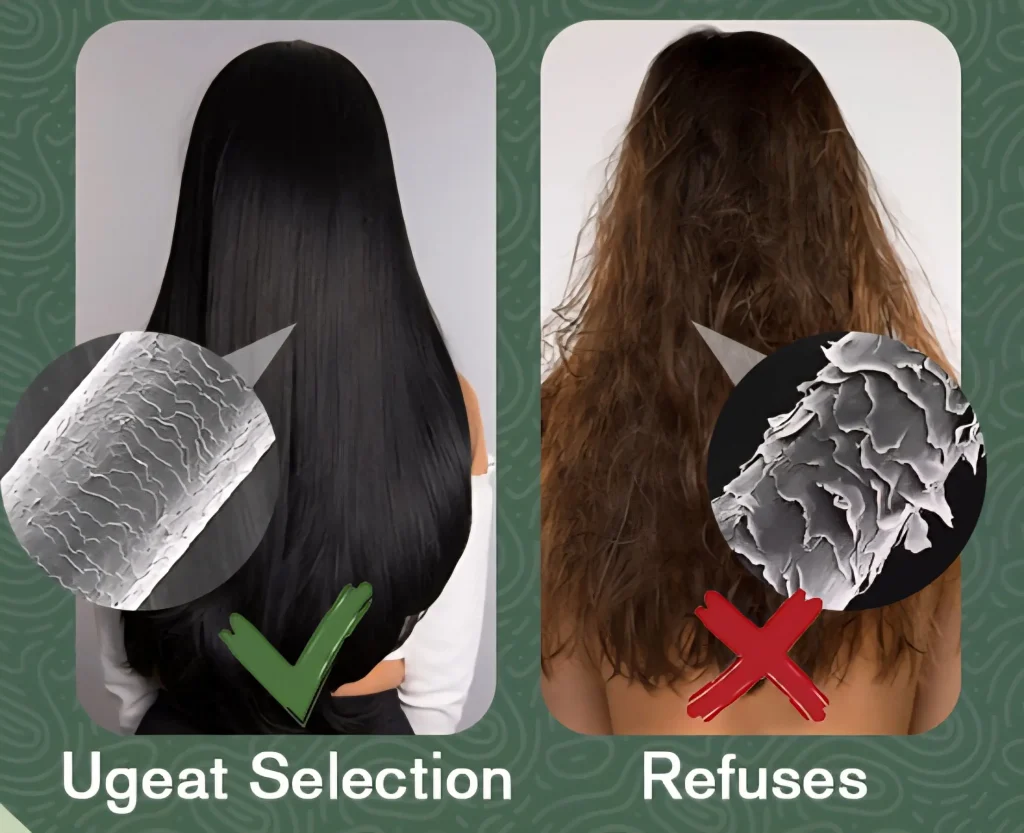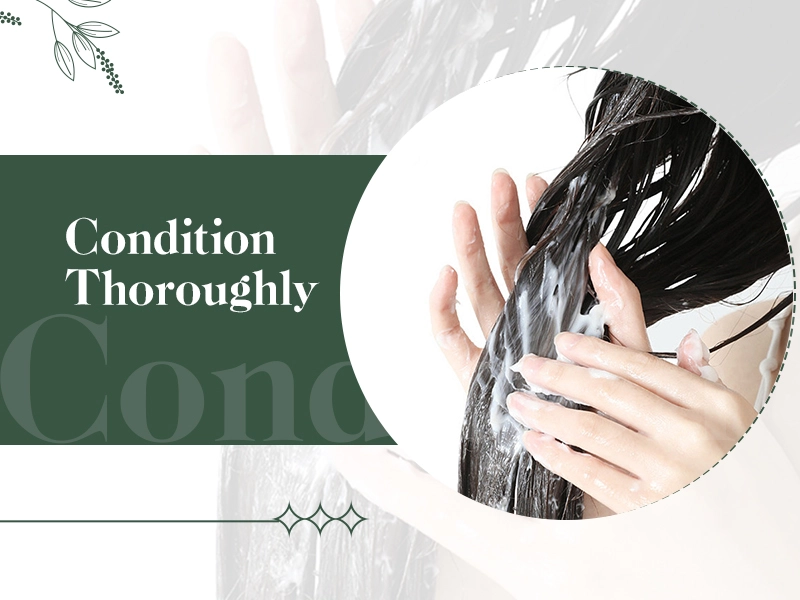Frizzy hair can ruin your style, but the problem isn’t always the product. Understanding the four main causes—hair quality, environment, care habits, and storage—helps you stop frizzy hair effectively. Below, we’ll explain why human hair extensions get frizzy and how to fix them for smooth, sleek hair.

Why Is My Hair Frizzy? The 4 Root Causes
1. Hair Quality: The #1 Culprit for Frizz
- No natural oils: Unlike scalp hair, extensions lack sebum, causing dry, frizzy hair over time.
- Chemical damage: Bleaching/dyeing opens hair cuticles, making moisture escape faster.
- Pro Tip: Even high-quality extensions need extra care to prevent frizzy hair conditions.

2. Environmental Triggers for Frizzy Hair
- Dry air: Low humidity sucks moisture out, leaving hair staticky and frizzy.
- Sun exposure: UV rays weaken hair proteins, leading to brittle, frizzy ends.
3. Care Mistakes That Cause Frizzy Hair
- Hard water: Minerals (calcium, chlorine) coat hair, blocking hydration and increasing frizz.
- Sulfates: Harsh shampoos strip oils, worsening dryness and frizz.
- Heat abuse: Curling irons/blow dryers without protection = instant frizz.
4. Storage Problems = Future Frizz
Long-term storage in excessively humid or dry environments can also compromise hair quality.
How to Prevent Frizzy Hair: 4 Solutions
1. Repair Dry, Frizzy Hair
Use moisturizing haircare products: Choose shampoos, conditioners, and hair masks containing natural oils (e.g., coconut oil, argan oil, shea butter) to replenish lost nutrients.
Regular deep conditioning: Apply a reparative hair mask or protein treatment 1-2 times per week to restore damaged cuticles and improve moisture retention.
Replenish keratin: Incorporate keratin-infused haircare products to strengthen hair structure, reducing breakage and dryness.

2. Shield Hair from Frizz-Inducing Environments
Increase ambient humidity: Use a humidifier in dry environments to minimize moisture loss.
UV protection: Wear a hat or apply UV-protective hair spray when outdoors to shield hair from sun damage.
Reduce static: Use anti-static combs (e.g., wooden or horn combs) and silicone-based serums to combat frizz.
3. Anti-Frizz Hair Care Routine
Prevent hard water damage: Install a water softener or use shampoos with EDTA to avoid mineral buildup.
Protect hair while swimming: Apply conditioner or coconut oil before swimming, wear a swim cap, and rinse immediately with fresh water afterward.
Choose gentle shampoos: Opt for sulfate-free (SLS/SLES-free) formulas to prevent over-stripping natural oils.
Limit washing frequency: Wash hair 2-3 times per week with lukewarm water to retain moisture.
Minimize heat styling: When using blow dryers or curling irons, apply heat protectants and keep temperatures below 180°C (356°F).
4. Store Extensions to Prevent Frizz
Avoid damp conditions: Store in a dry, well-ventilated area to prevent mold or bacterial growth.
Dry storage solutions: For long-term storage, use sealed bags or moisture-proof boxes with desiccants.
Regular inspection: Periodically air out unused extensions/wigs to prevent fiber degradation.
If you have any other questions about this, please contact us.We are here to help
